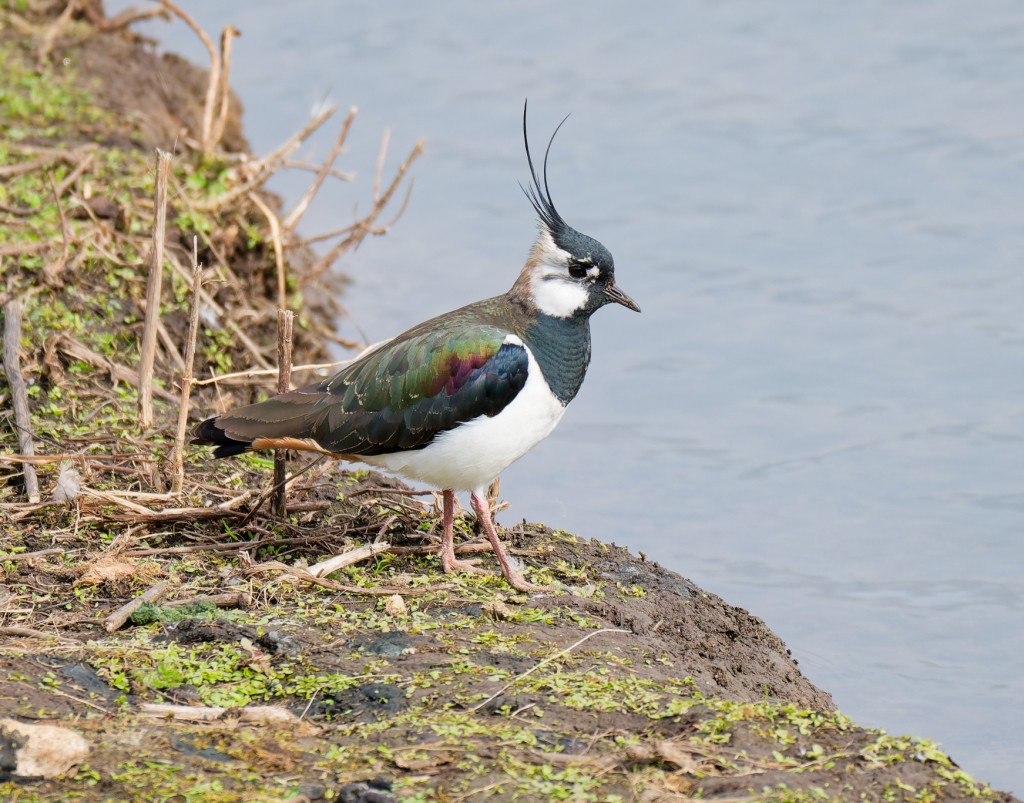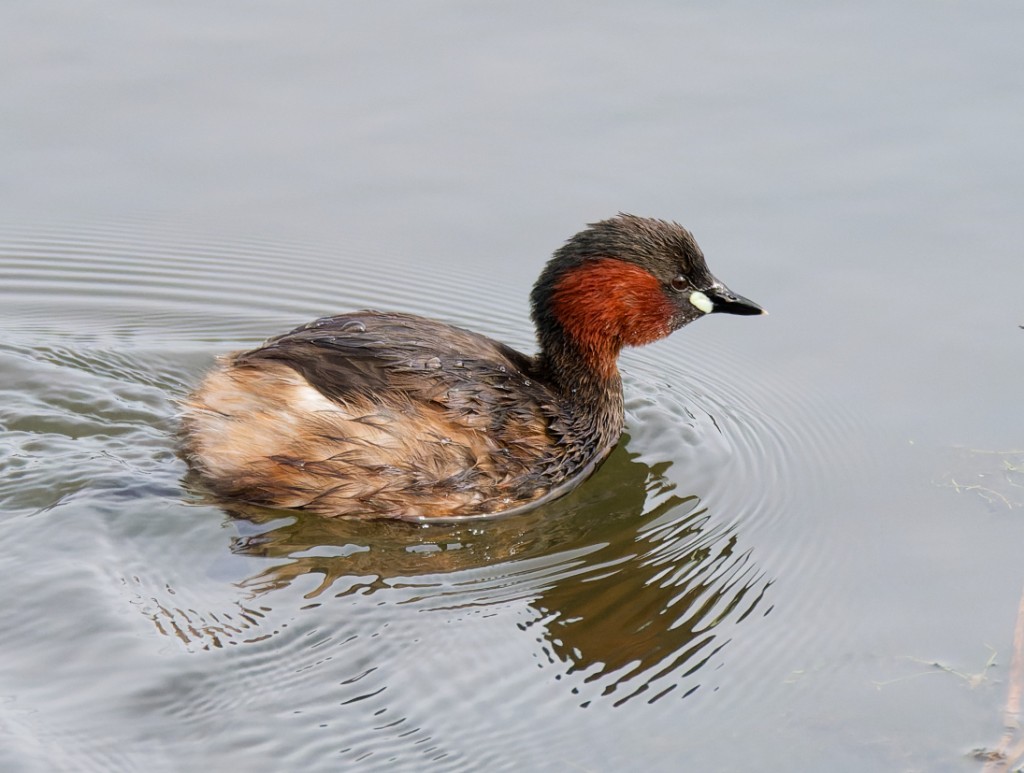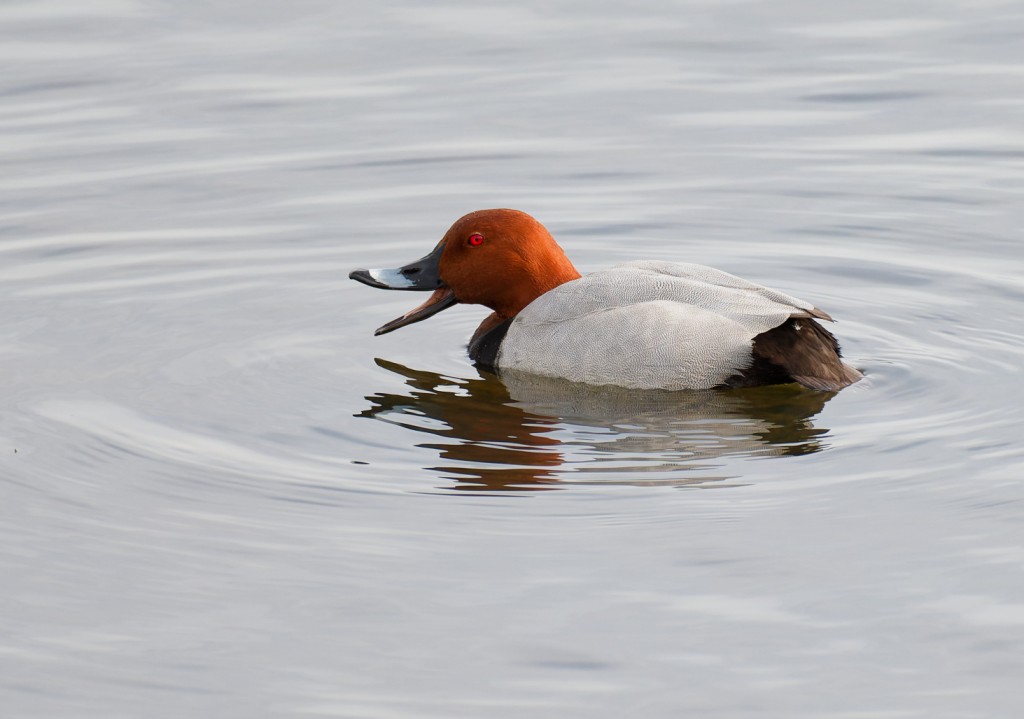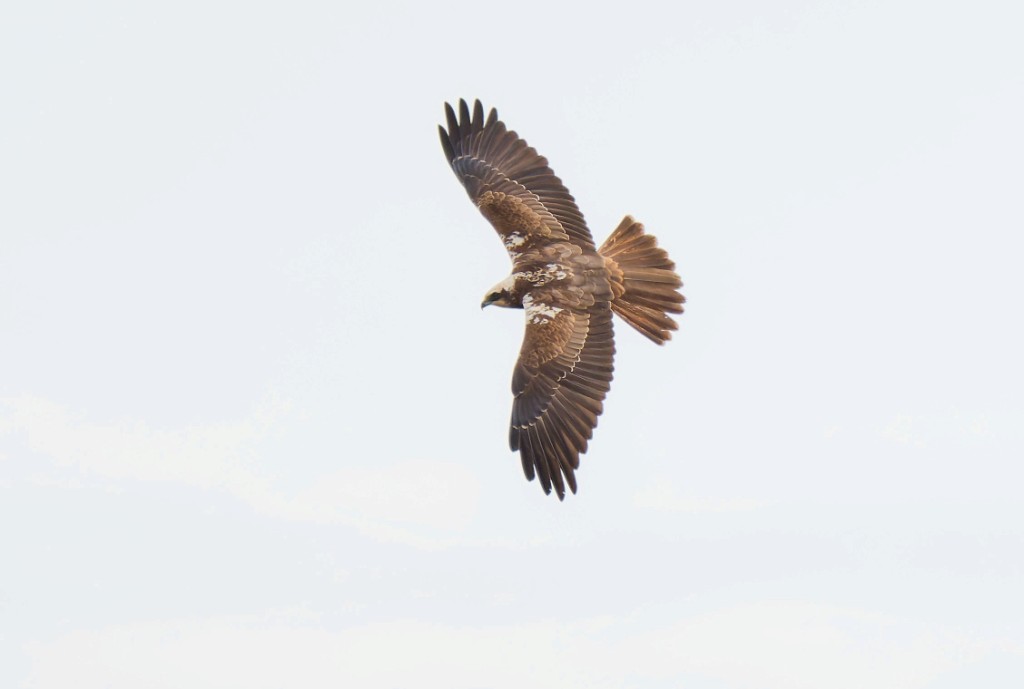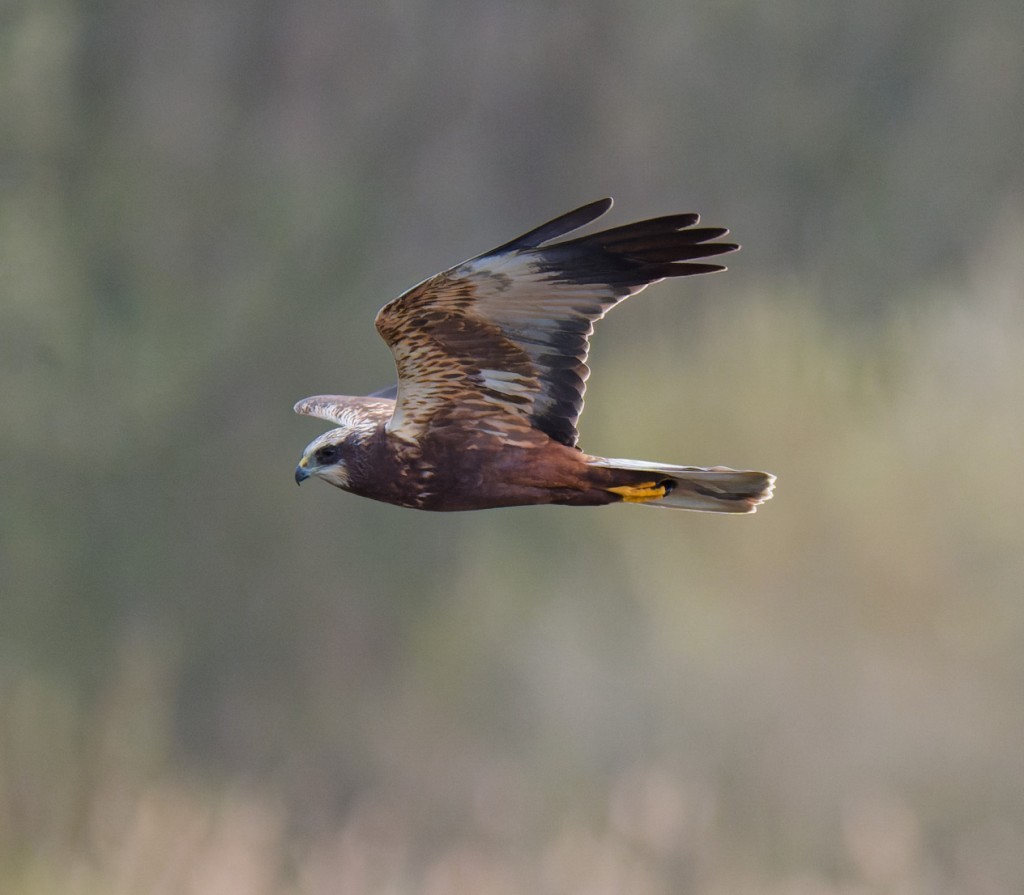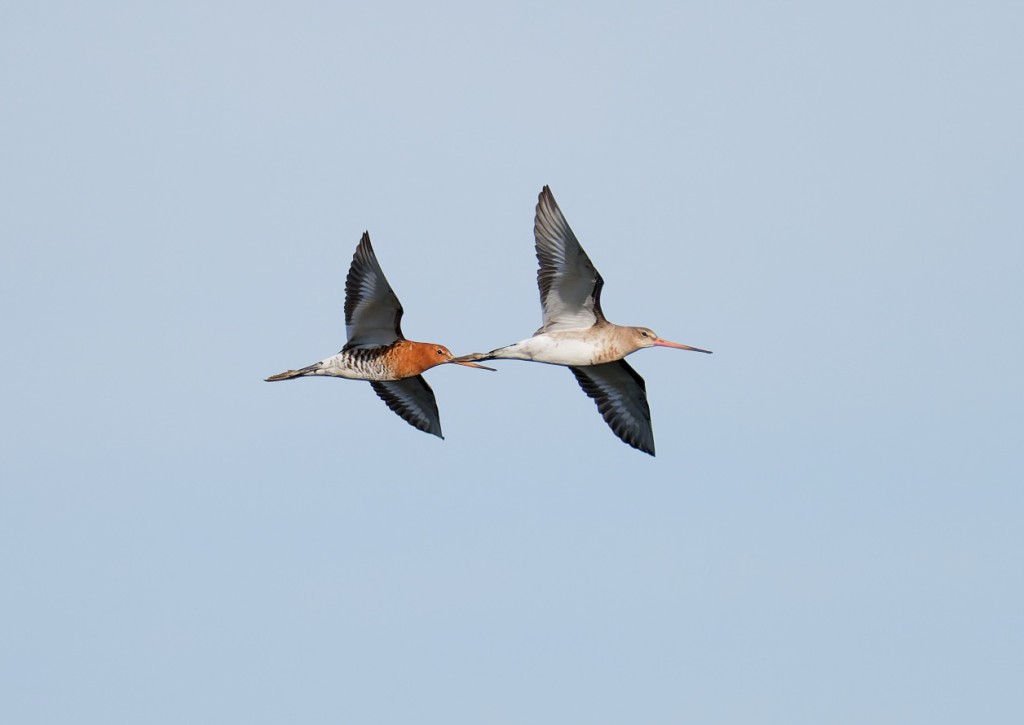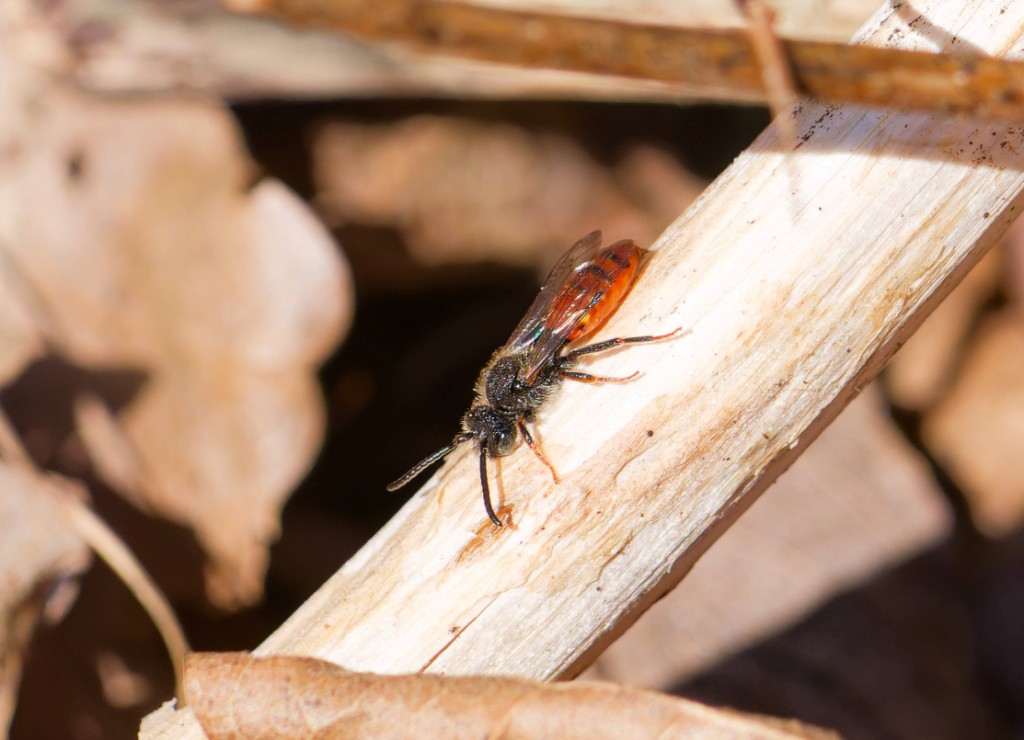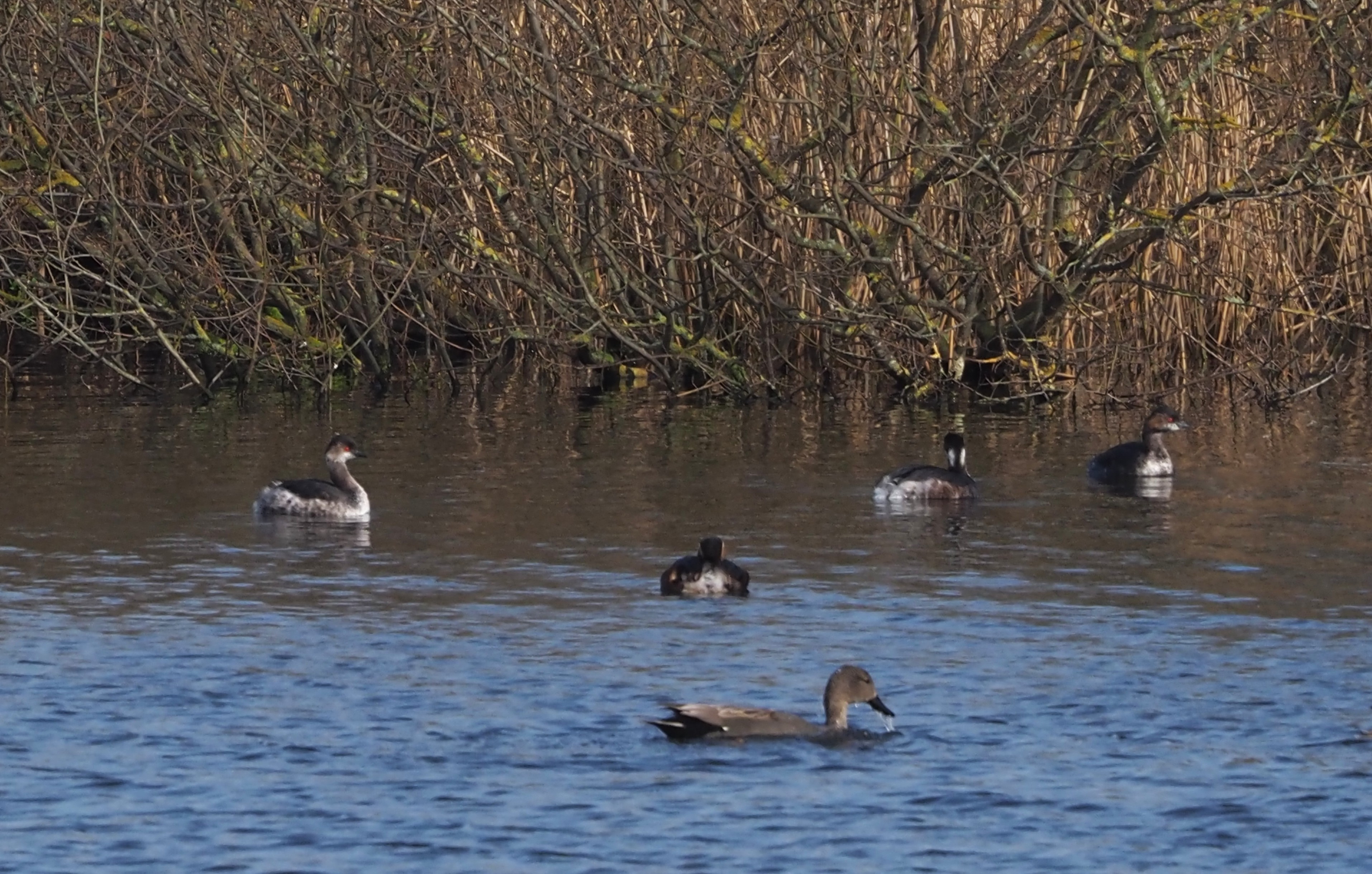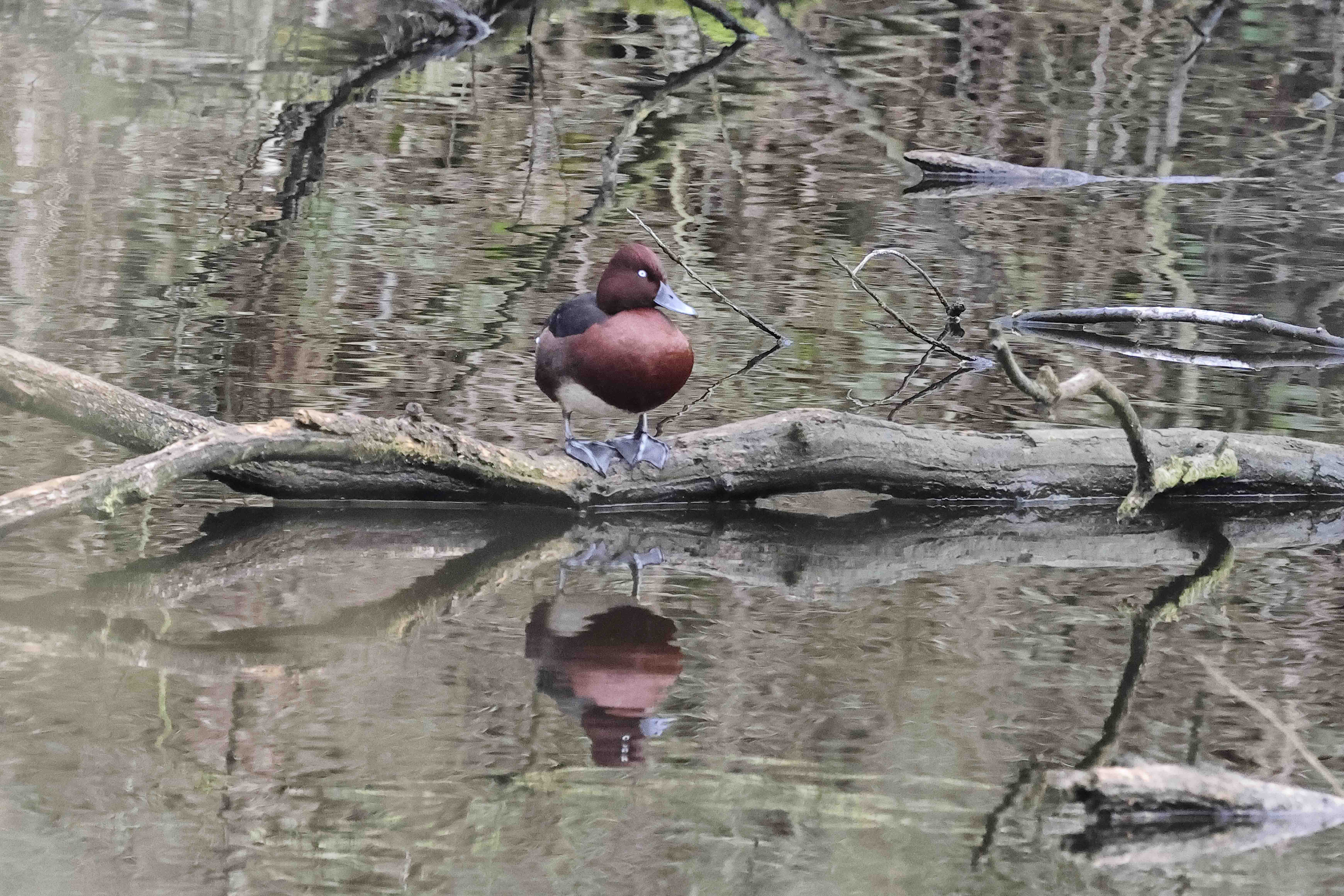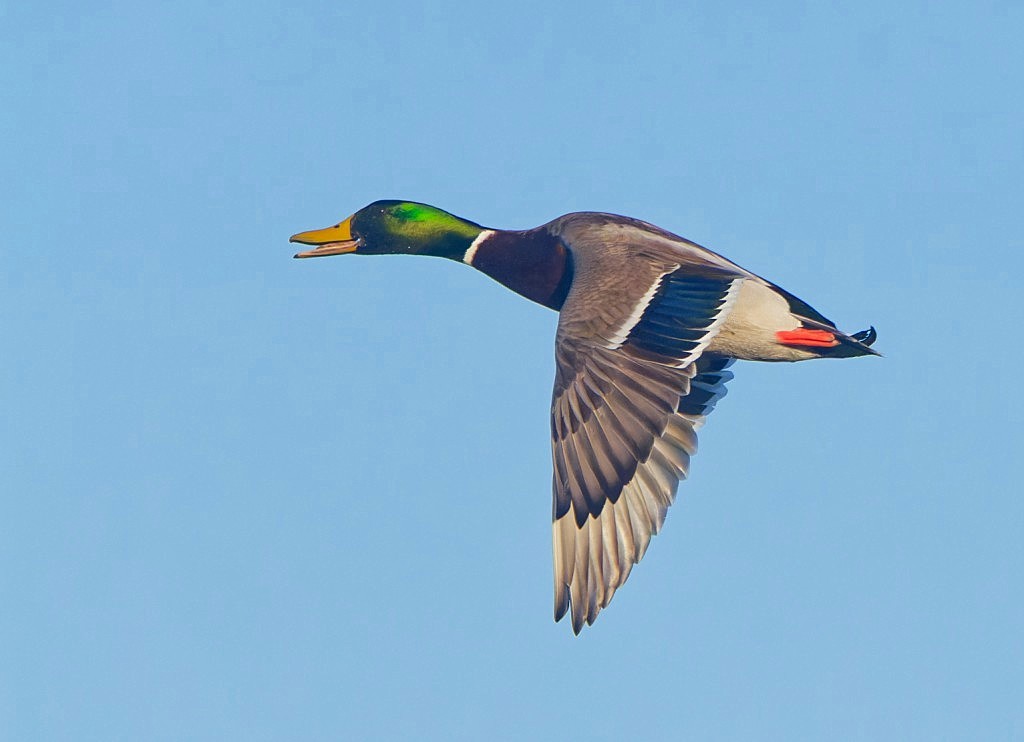Woolston Eyes Monthly Sightings
2025-03-30
Saturday morning was cooler than recently, with the wind shifting to the west and hazy cloud obscuring any attempts to see the partial solar eclipse. There was plenty of activity on No.3 bed, though, with an increase in the number of singing Blackcaps and Chiffchaffs and masses of water-birds engaged in courtship behaviour. Any Black-necked Grebes on the bed are proving elusive to see, though the same held true last year before numerous broods suddenly appeared later in the season. They are, however, easy to see on No.4 bed where at least 30 are currently pairing and displaying. The only visible passage involved the arrival of our first Common Sandpiper of the year and a northward trickle of Sand Martins, so our focus was mainly on the four Marsh harriers which were active all morning. These included a pair which treated us to extensive display flights, soaring, diving acrobatically and tumbling in the air with locked talons, sustaining hopes that we might add a second breeding pair this year. Photo of a male Marsh Harrier Cheers David Bowman (with Helen Wynn)
Submitted by: David Bowman
2025-03-28
Yesterday was warm and sunny and we managed a couple of hours birding on No.4 bed before walking eight miles, from end to end of the Reserve with our RSPB colleagues, reviewing the completion of the Willow Tit habitat restoration project. So, I was able to give my new camera gear an initial try-out. Highlights of the morning were : our first Willow Warbler of the year, 30 Black-necked Grebes, many of which were pairing up and displaying, 14 Blackcaps, 23 Cetti’s Warblers, 71 Chiffchaffs and two Black-tailed Godwits, which circled repeatedly before heading off, with their Icelandic breeding grounds a long flight away. As an aside, I’ve been sent photographs of a number of permit holders walking around the bunds of the wetland, causing major disturbance to the birds. Can I gently remind visitors to stay on the permitted paths and to use the elevated platform for viewing? Record shot of the Black-tailed Godwits Cheers David Bowman (with Dan Owen)
Submitted by: David Bowman
2025-03-22
The light was good and the weather conducive to some excellent spring passage this morning. It morning started well with an Osprey moving south over No.4 bed at dawn, while more than 300 Sand Martins dropped in to feed before moving off to the east. Other birds moving included a Little Ringed Plover, 2 Mediterranean Gulls and a Yellow-legged Gull. Out on the water 27 Black-necked Grebes included several pairs displaying in front of the viewing platform, while 500 Black-headed Gulls at the breeding colony added a raucous backdrop. Around the perimeter of the bed 2 Blackcaps, 21 Cetti’s Warblers and 62 Chiffchaffs were in song, encouraged by the increasingly warm sunshine. Mid-morning we moved onto No.3 bed, where another Black-necked Grebe and 2 Egyptian Geese were reported and another 60 Sand Martins passed through. As is regular at the moment, the resident pair of Marsh Harriers treated us to some high soaring display flight, while a further 12 Cetti’s Warblers were in song. Photo of a Fabricius Nomad Bee, which predates the more common Gwynne’s Mining Bee. Taken on the south bank of No.3 bed. Cheers David Bowman (with Dan Owen, Helen Wynn and Brian Baird)
Submitted by: David Bowman
2025-03-10
Good to see there are now at least 5 Black-necked Grebes. 4 in shot. Apologies for the poor quality of the photo taken at distance from the Morgan Hide.
Submitted by: John Carpenter
2025-03-01
It was spring-like weather on Thursday, with a good number of our less common species noted. Among these were singles of Red Kite, Dunlin, Peregrine, Pintail and Brambling, plus 2 Willow Tits, 5 Oystercatchers and 5 Goldeneyes. While I wasn’t able to make it down to the Reserve today to welcome the first day of spring, Dan Owen was and recorded our first returning Black-necked Grebes - with one on No.4 bed and another two on No.3 bed. There should be plenty more arriving in the coming weeks and here’s hoping for another good breeding season for this scarce and charismatic species. Photo of a drake Mallard Cheers David Bowman
Submitted by: David Bowman

